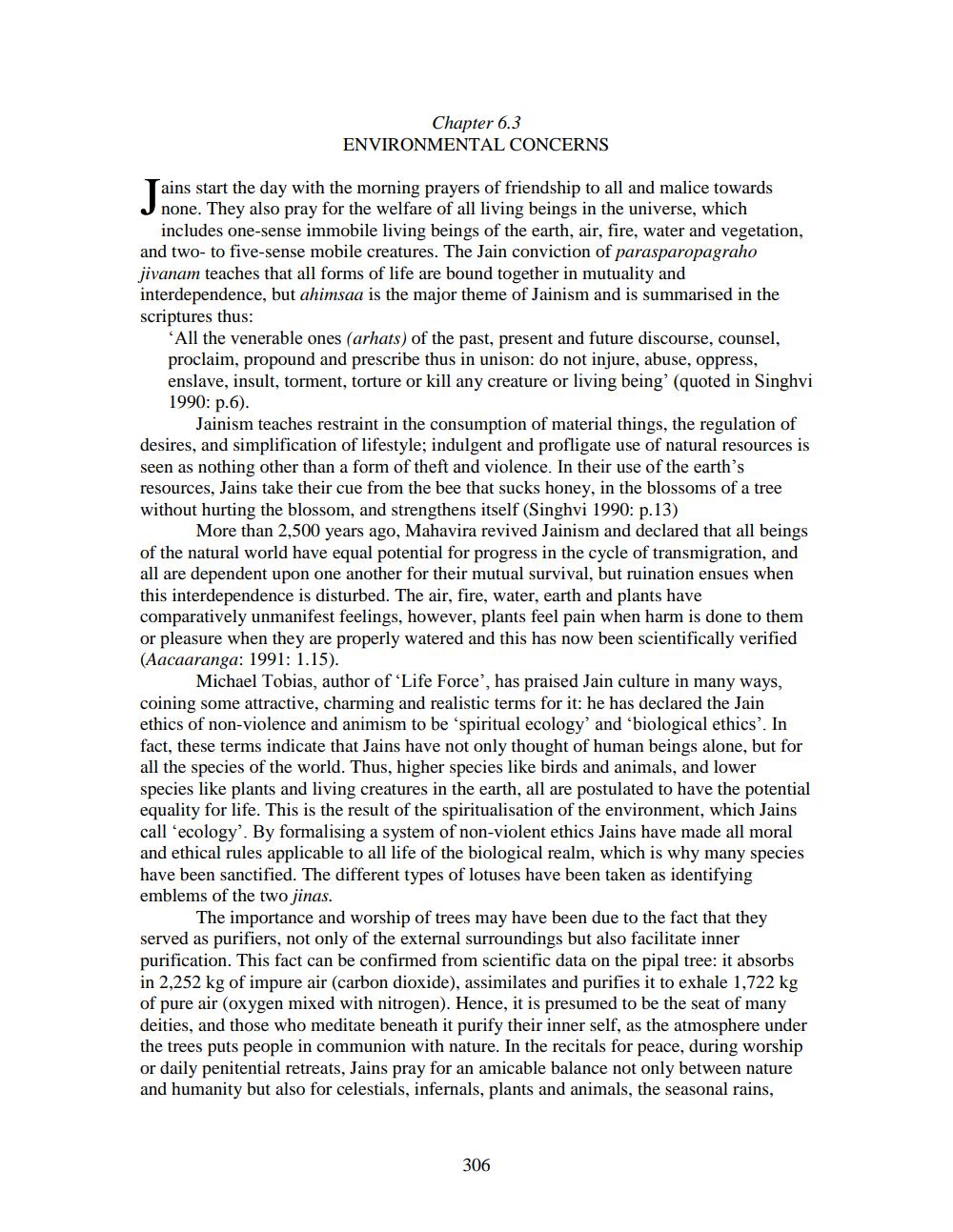________________
Chapter 6.3 ENVIRONMENTAL CONCERNS
ains start the day with the morning prayers of friendship to all and malice towards J none. They also pray for the welfare of all living beings in the universe, which
includes one-sense immobile living beings of the earth, air, fire, water and vegetation, and two-to five-sense mobile creatures. The Jain conviction of parasparopagraho jivanam teaches that all forms of life are bound together in mutuality and interdependence, but ahimsaa is the major theme of Jainism and is summarised in the scriptures thus:
All the venerable ones (arhats) of the past, present and future discourse, counsel, proclaim, propound and prescribe thus in unison: do not injure, abuse, oppress, enslave, insult, torment, torture or kill any creature or living being' (quoted in Singhvi 1990: p.6).
Jainism teaches restraint in the consumption of material things, the regulation of desires, and simplification of lifestyle; indulgent and profligate use of natural resources is seen as nothing other than a form of theft and violence. In their use of the earth's resources, Jains take their cue from the bee that sucks honey, in the blossoms of a tree without hurting the blossom, and strengthens itself (Singhvi 1990: p.13)
More than 2,500 years ago, Mahavira revived Jainism and declared that all beings of the natural world have equal potential for progress in the cycle of transmigration, and all are dependent upon one another for their mutual survival, but ruination ensues when this interdependence is disturbed. The air, fire, water, earth and plants have comparatively unmanifest feelings, however, plants feel pain when harm is done to them or pleasure when they are properly watered and this has now been scientifically verified (Aacaaranga: 1991: 1.15).
Michael Tobias, author of 'Life Force', has praised Jain culture in many ways, coining some attractive, charming and realistic terms for it: he has declared the Jain ethics of non-violence and animism to be 'spiritual ecology' and 'biological ethics'. In fact, these terms indicate that Jains have not only thought of human beings alone, but for all the species of the world. Thus, higher species like birds and animals, and lower species like plants and living creatures in the earth, all are postulated to have the potential equality for life. This is the result of the spiritualisation of the environment, which Jains call 'ecology'. By formalising a system of non-violent ethics Jains have made all moral and ethical rules applicable to all life of the biological realm, which is why many species have been sanctified. The different types of lotuses have been taken as identifying emblems of the two jinas.
The importance and worship of trees may have been due to the fact that they served as purifiers, not only of the external surroundings but also facilitate inner purification. This fact can be confirmed from scientific data on the pipal tree: it absorbs in 2,252 kg of impure air (carbon dioxide), assimilates and purifies it to exhale 1,722 kg of pure air (oxygen mixed with nitrogen). Hence, it is presumed to be the seat of many deities, and those who meditate beneath it purify their inner self, as the atmosphere under the trees puts people in communion with nature. In the recitals for peace, during worship or daily penitential retreats, Jains pray for an amicable balance not only between nature and humanity but also for celestials, infernals, plants and animals, the seasonal rains,
306




